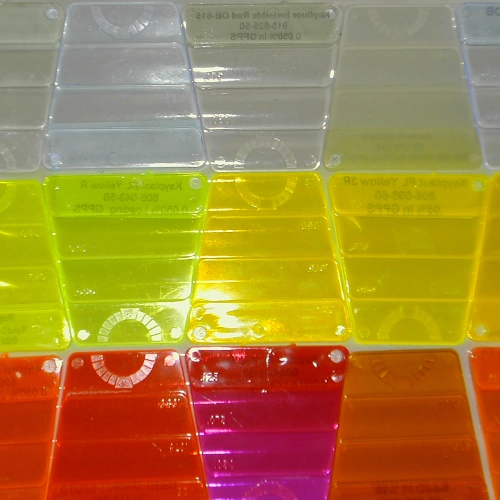SOLUBLE DYES AND MARKERS TAGGING
Property: soluble dyes azo dyes, solvent dyes, acid dyes, alkali dyes, direct dyes, reactive dyes, disperse dyes, metal complex dyes, optical brighteners, synthetic food dyes, organic and inorganic dyes.

Mineral oil and paraffins and other carbon-hydrogen compounds can be coloured with so-called fat-soluble and oil soluble dyes.
Optical brighteners and soluble dyes are used in almost all detergents and are supposed to be highly soluble in warm water but at the same time stable against alkaline conditions.
Complementary to the range of fluorescent dyes then are the optical brighteners – which are intrinsically colourless and only fluoresce under UV light.
as well as
- Anionic direct dyes in powder form and liquid concentrate
- Cationic basic dyes in powder form and liquid concentrate
- Dyes for cardboard production
- Food Dyes E133, E104… for napkins and food contact
1. Information about the specific properties of the dyes, including any potential health or environmental risks associated with their use.Dyes classed as they are solouble in means solvent dyes (e.g. SY Solvent Yellow) does solublize in solvents. Knowing about kind of solvent we sort out which dye best is in use. Azodyes are synthetic dyes that are used in a variety of applications, including dyeing fabrics and printing inks. They have been known to cause health and environmental risks due to their potential for leaching into water sources and their potential for bioaccumulation in aquatic organisms. Exposure to azodyes has been linked to reproductive and developmental health issues in humans. Azodyes have also been known to cause skin irritation and allergies. In addition, azodyes can be toxic to aquatic organisms, such as fish, due to their ability to bind to dissolved oxygen in the water and reduce oxygen levels in the environment.
2. Information about the specific applications for which these dyes are used.Solvent dyes are used in a variety of applications, including coloring plastics and printing inks. They are typically non-polar and are soluble in organic solvents, such as alcohols, ketones, esters, and hydrocarbons. Solvent dyes are often used in industrial applications and are available in a variety of colors, including blue, green, red, orange, yellow, and violet. They are often used in combination with other pigments to create a variety of shades and hues.
3. Information about any potential alternatives to the dyes mentioned in the content.There are a number of alternatives to solvent dyes, including water-soluble dyes, reactive dyes, and pigment dyes. Water-soluble dyes are water-based and do not require the use of organic solvents, making them safer to use and more environmentally friendly. Reactive dyes are also water based, but contain reactive groups that allow them to form covalent bonds with the substrate, making them more colorfast and lightfast. Pigment dyes are insoluble and are usually ground into a powder form, which is then mixed with a binder to create a paste or ink that can be applied to the substrate. Pigment dyes are more lightfast and colorfast than solvent dyes and are often used for industrial applications.
4. Information about the availability and cost of these dyes.Colux sources dyes materials from several places on market includes EUROPE, INDIA and CHINA origins.
